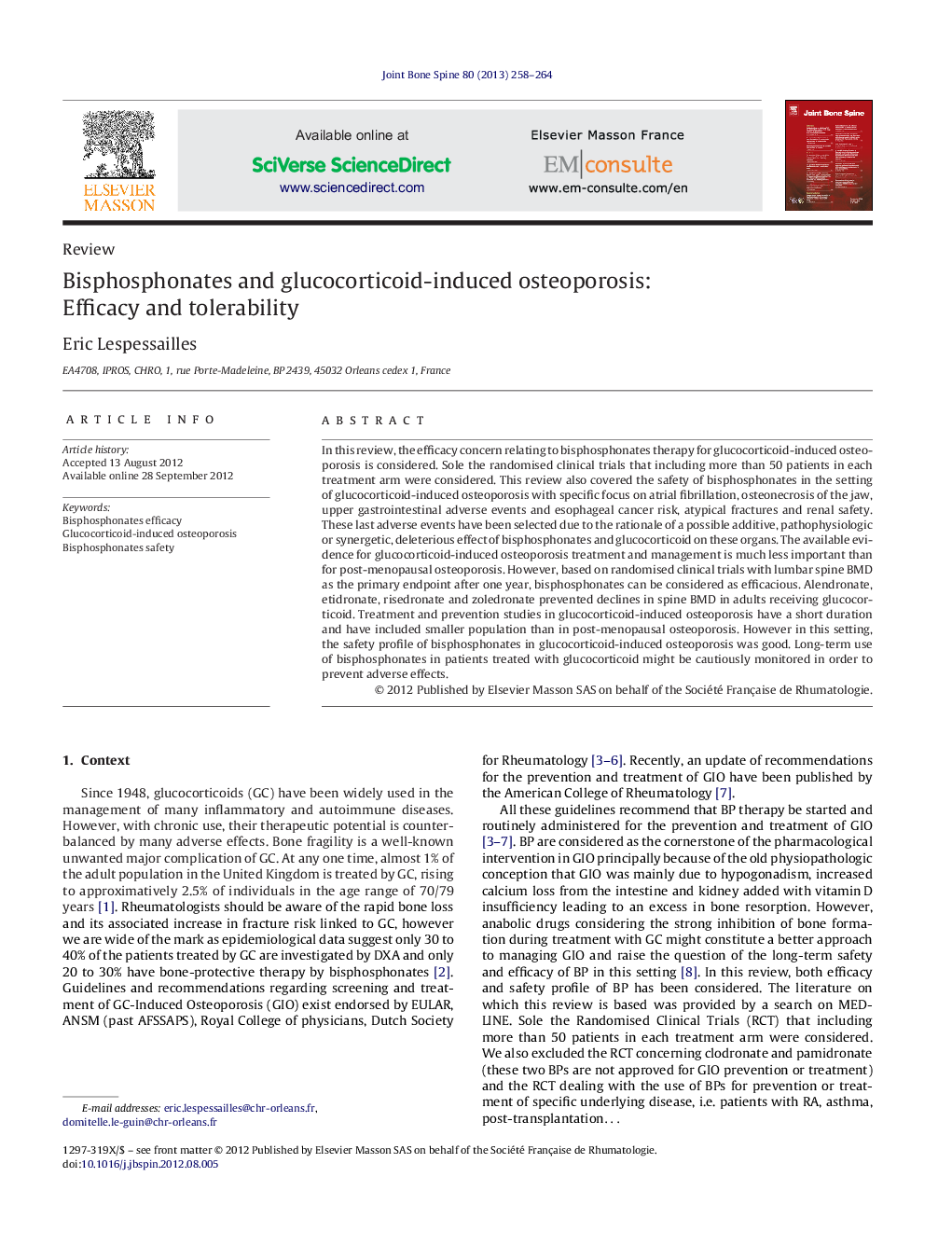| Article ID | Journal | Published Year | Pages | File Type |
|---|---|---|---|---|
| 3366039 | Joint Bone Spine | 2013 | 7 Pages |
In this review, the efficacy concern relating to bisphosphonates therapy for glucocorticoid-induced osteoporosis is considered. Sole the randomised clinical trials that including more than 50 patients in each treatment arm were considered. This review also covered the safety of bisphosphonates in the setting of glucocorticoid-induced osteoporosis with specific focus on atrial fibrillation, osteonecrosis of the jaw, upper gastrointestinal adverse events and esophageal cancer risk, atypical fractures and renal safety. These last adverse events have been selected due to the rationale of a possible additive, pathophysiologic or synergetic, deleterious effect of bisphosphonates and glucocorticoid on these organs. The available evidence for glucocorticoid-induced osteoporosis treatment and management is much less important than for post-menopausal osteoporosis. However, based on randomised clinical trials with lumbar spine BMD as the primary endpoint after one year, bisphosphonates can be considered as efficacious. Alendronate, etidronate, risedronate and zoledronate prevented declines in spine BMD in adults receiving glucocorticoid. Treatment and prevention studies in glucocorticoid-induced osteoporosis have a short duration and have included smaller population than in post-menopausal osteoporosis. However in this setting, the safety profile of bisphosphonates in glucocorticoid-induced osteoporosis was good. Long-term use of bisphosphonates in patients treated with glucocorticoid might be cautiously monitored in order to prevent adverse effects.
